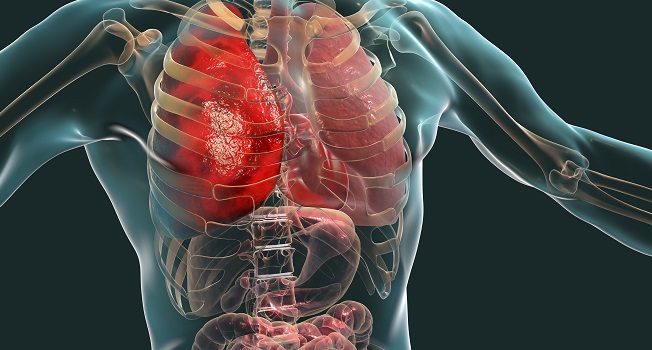Click Here to Download this Blog Post – Long COVID and Multi-Organ Disorder
Here we provide a definition for this syndrome and discuss the organs that are involved. The involvement of multiple organs is due to that fact that angiotensin converting enzyme-2 receptors (the entry points for the virus), inflammation and oxidative stress (the immediate effects of the virus) effect all systems of the body. We suggest that this is then perpetuated by a resulting autonomic dysfunction. Since the autonomic dysfunction also effects all systems of the body, the initial infection is compounded and perpetuated by the resulting autonomic dysfunction underlying the Long-COVID Syndrome. We discuss the symptoms and suggest therapies that target the underlying autonomic dysfunction to relieve the symptoms, rather than merely treating symptoms. In addition to treating the autonomic dysfunction, the therapy also treats chronic inflammation and oxidative stress. To fully document the autonomic dysfunction, a full assessment of the autonomic nervous system is recommended, including Cardio-Respiratory Monitoring. Specific measurements of Parasympathetic and Sympathetic activity, both at rest and in response to challenges, connects all symptoms of Long-COVID to the documented autonomic dysfunction(s).
Citation: Nicholas L DePace, Joe Colombo (2022) Long-Covid Syndrome: A Multi-Organ Disorder. Cardio Open, 7(1): 213-224
History
COVID-19 was reported in Wuhan, China in December 2019. It is caused by a small novel coronavirus. The acute phase of COVID-19 infected patients has been well described and may a have varying number of symptoms and intensity. The majority of patients have fever, sore throat, cough, shortness of breath, and chest pain. Although, multiorgan involvement may become extensive. COVID symptoms may be identified in six clusters [1]. These include: 1. Flu-like with no fever, which consist of headache, loss of smell or taste, cough, muscle pains, sore throat, chest pains. 2. Flu-like with fever, which consists of headache, loss of smell or taste, cough, sore throat, hoarseness, fever, loss of appetite. 3. Gastrointestinal, which consists of headache, loss of smell or taste, loss of appetite, diarrhea, sore throat, chest pain, but no cough. 4. Severe level one, fatigue with headache, loss of smell or taste, cough, fever, hoarseness, chest pain. 5. Severe level two, which consists of confusion with head ache, loss of smell, loss of appetite, cough and fever, hoarse ness, sore throat, chest pain, fatigue, and muscle pain. 6. Severe level three, which is abdominal and respiratory dysfunction with headache, loss of smell or taste, loss of appetite, cough, fever, hoarseness, chest pain, fatigue, sore throat, confusion, muscle pain, diarrhea, shortness of breath and abdominal pain. The recovery from COVID-19 usually occurs at seven to ten days after the onset of symptoms in mild disease but could take up to six weeks in severe or critical illness. It is for this reason that mild cases are usually quarantined for between 7-10 days, and severe illnesses are for a more extended period of time. However, it is believed that even when one is ill for 3-6 weeks, they are probably not actively contagious. Some studies have shown that active coughing is indicative of continuing contagiousness. This has not been clarified. Studies have shown that household cases support the highest incidences of contagious ness and that rational for masks appears to be most beneficial with close contacts for prevention. The most common feature of acute illness is interstitial pneumonia, which may in some cases be complicated by the serious acute respiratory distress syndrome where individuals require high doses of oxygen. This has a high mortality particularly in elderly people who have comorbidities. The cough is usually dry. Laboratory abnormalities may be present and include low lymphocyte counts, elevated inflammatory markers, such as Sed Rate, C-reactive protein, Ferritin, Interleukin 1 and 6, and Tu mor Necrosis Factor abnormalities, and others, which will be discussed later. Coagulation system abnormalities may occur (to be discussed later). Clots may form in the acute phase as well as in the subacute phase, especially if there is a history of clots.



